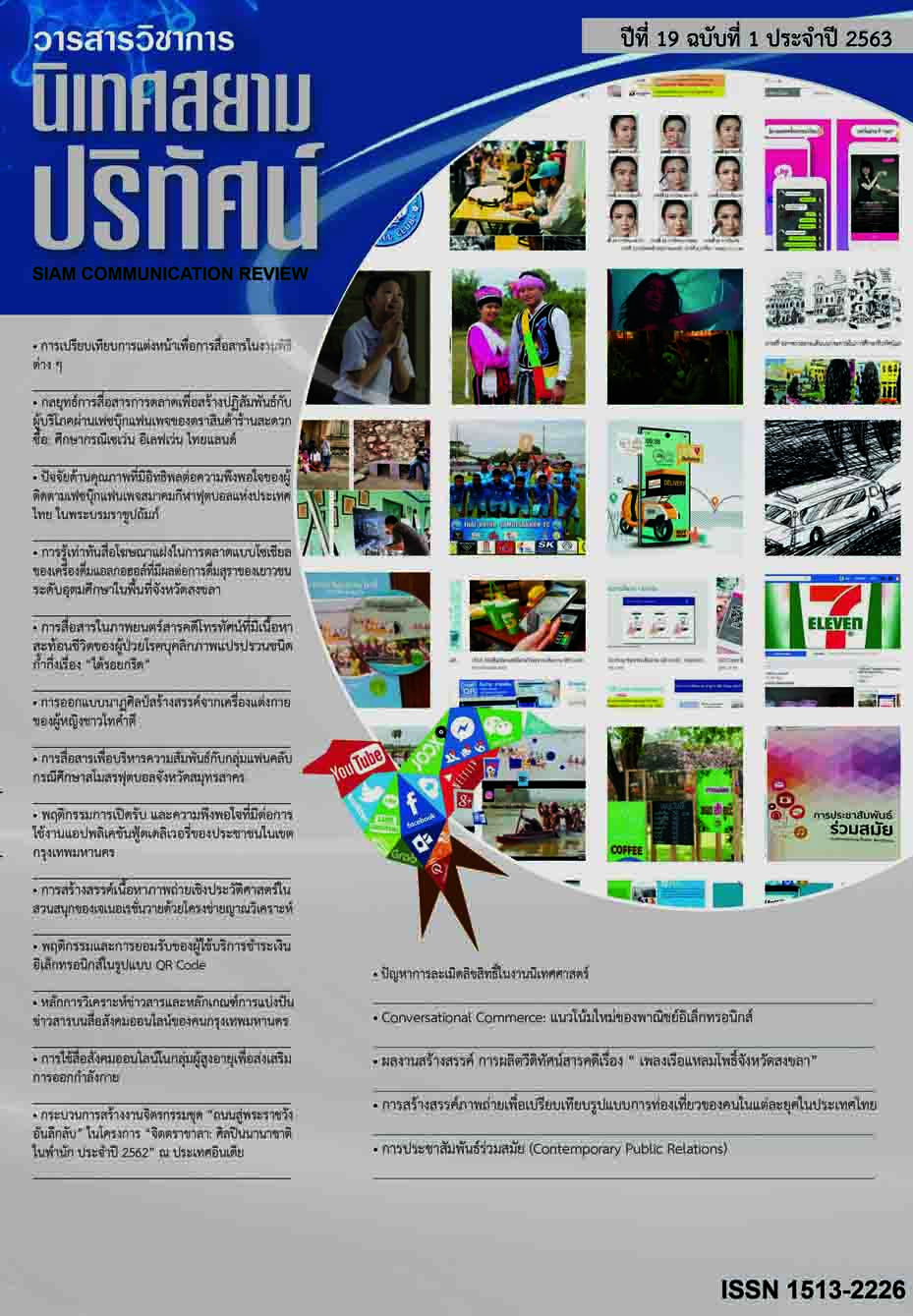The Comparative Study of Make-up Communication in Variety Ceremonial Events
Main Article Content
Abstract
The objectives of this research is understand how to create meaning through make-up of the participants by analyzing the make-up in any ceremonial events and to know the features of overlapping communication elements which affect meaning construction of participants’ make-up in ceremonial events which include 1. official ceremonies (royal decoration ceremony), 2. private ceremonies (wedding ceremony, ordination ceremony, house blessing ceremony), 3. public ceremonies (civil service retirement party), 4. semi-official ceremonies (royal cremation, commencement ceremony), 5. semi-private ceremonies (the royal ploughing ceremony, candle-lit ceremony in honor of Queen Mother on her majesty birthday), 6. public-private ceremonies (premiere ceremony of 2,215 the movie) and 7. public-official ceremonies (the royal cremation ceremony of King Rama 9). The quality research, in-depth interviewing and participant observation conduct the research.
It was found that the meaning creation through participants’ make-up in each ceremony all has the similar processes. However, the difference of make-up depends on the price, roles and responsibilities of the ceremony participants. Moreover, the meaning creation can lead to the ambiguity communication caused by the elements of the communication which contain sender, receiver, media, message, context, code, feedback and noise which overlap and symbiosis.
Article Details
References
เจริญพงศ์ ศรีสกุล. (2550). การออกแบบเนื้อหาส่วนควบและส่วนขยายในสื่อดีวีดี ภาพยนตร์. วิทยานิพนธ์นิเทศศาสตรมหาบัณฑิต, ภาควิชาสื่อสารมวลชน คณะนิเทศศาสตร์ จุฬาลงกรณ์มหาวิทยาลัย.
ราชบัณฑิตยสถาน. (2556). พจนานุกรม ฉบับราชบัณฑิตยสถาน พ.ศ. 2554 (พิมพ์ครั้งที่ 2). กรุงเทพฯ: นานมีบุ๊คพับลิเคชั่นส์ จำกัด.
ศิริชัย ศิริกายะ. (2562). การสื่อสารกับอเสถียรตรรกะ. วารสารนิเทศสยามปริทัศน์, 18(2), 8-12.
________. (2558). ข้อเสนอแนะประเด็นการสื่อสารเพื่องานวิจัยนิเทศศาสตร์ตามแนวคิด “ปฏิปักษ์สัมพันธ์” (Symbiosis) ในยุคดิจิทัล. วารสารนิเทศสยามปริทัศน์, 14(16), 7-11.
________. (2558). แบบจำลองการสื่อสารในยุคดิจิทัล. วารสารนิเทศสยามปริทัศน์, 13(15), 8-13.
สายสม วงศาสุลักษณ์. (2536). บทบาทงานพิธี ในฐานะที่เป็นสื่อ. วิทยานิพนธ์นิเทศศาสตรมหาบัณฑิต, ภาควิชาสื่อสารมวลชน คณะนิเทศศาสตร์ จุฬาลงกรณ์มหาวิทยาลัย.
ภาษาอังกฤษ
Burton, G. (2002). More than Meets the Eye: An Introduction to Media Studies (3rd ed.). London: Arnold.
McNeill, D., & Freiberger, P. (1994). Fuzzy Logic: The Revolutionary Computer Technology that Is Changing Our World. New York: Simon and Schuster.
Fidler, R. F. (1997). Mediamorphosis: Understanding New Media. Thousand Oaks, Calif: Pine Forge Press.
Fiske, J. (1990). Introduction to Communication Studies. London and New York: Routledge.
Gretchen, D., & Mindy, H. (2008). Techniques for Film, Television, Photography, and Theatre. Amsterdam and Boston: Focal Press.
Hall, E. T. (1976). Beyond Culture. New York: Anchor Press.
Kenneth K. Sereno, & C. David Mortensen. (1970). Foundations of Communication Theory. New york: Harper & Row.
Littlejohn, S. W., & Foss, K. A. (2011). Theories of Human Communication (10th Ed.). Long Grove, IL: Waveland Press.
McLuhan, M. (1964). Understanding Media: The Extensions of Man. New York: McGraw-Hill.
McNeil, D., & Freiberger, P. (1993). Fuzzy Logic. New York: Simon and Schuster.
Toulmin, S. E. (1964). The Uses of Argument. Cambridge: Cambridge University Press.


